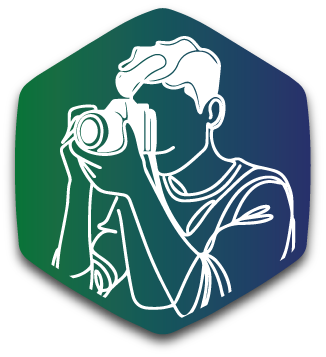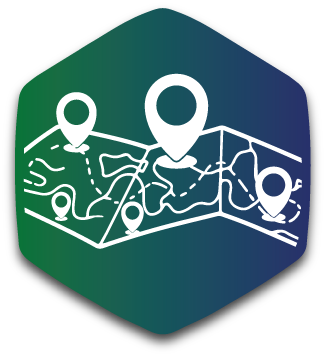National Archaeological Museum
of Chiavari
The museum, inaugurated in 1985, is located in what was once the stables of Palazzo Rocca (18th century) in the historic centre of Chiavari. It showcases archaeological finds and evidence from the Chiavari district.
Notably, the museum preserves artifacts from the archaeological excavations carried out in Viale Millo during the second half of the 20th century, including a cremation burial ground dating back to the 7th century BC. This burial ground remains one of the most significant testimonies of the Early Iron Age in Italy. The 126 box-shaped tombs contained cinerary urns along with numerous grave goods.
Civic Gallery of Palazzo Rocca
The seventeenth-century Palazzo Costaguta-Rocca hosts the Civic Gallery, which can be considered in many ways to be the ‘city museum,’ as well as a ‘museum of housing and living’ and an art gallery too.
The latter, in particular, houses paintings by Genoese and Flemish 17th-century artists, including Bernardo Strozzi, Valerio Castello, Bartolomeo Boscaino, and Frederick Van Valckenborch.
Both the architectural structure and the furnishings of the palace display traces of various historical phases; along with these artworks, visitors can also explore the ancient kitchen and the early 20th-century technological innovations for daily life, making it a museum of housing and living.
This palace also serves as a city museum, housing significant artifacts acquired through a series of acquisitions, such as the 15th-16th century “cielino” [the underside of a balcony] from a medieval house on Via Rivarola and the prestigious Pietro Torriglia painting collection, which originates from the palace of the same name.
The collection includes works by Giovanni Benedetto Castiglione, known as il Grechetto (1653), Domenico Piola, Stefano Camogli, Orazio De Ferrari, Anton Maria Vassallo, and Cesare Corte.
The ground floor houses the National Archaeological Museum of Chiavari, while the first floor is typically reserved for temporary exhibitions.
The palace, bequeathed to the municipality by its last owner, Giuseppe Rocca, has been open to the public since 1987.
Diocesan Museum of Sacred Art
The Bishop Palace houses the Diocesan Museum of Sacred Art on the first floor. The rooms, formerly used as the Seminary Library, now preserve paintings, sculptures, silver artifacts, and textiles from both currently active churches and deconsecrated religious complexes.
The painting collection includes artworks by Carlo Braccesco, Lorenzo Fasolo, Cesare Corte, Giovanni Benedetto Castiglione, Andrea Ansaldo, and Bartolomeo Guidobono. The liturgical furnishings include a 13th-century alms chest and the pectoral cross of Pope Innocent IV of the Fieschi family.
The sacred vestments document the rich textile tradition of the area, with fabrics from Zoagli and Lorsica, renowned manufacturing centres since the 18th century. A valuable collection of ex-votos comes from the nearby Sanctuary-Cathedral of Nostra Signora dell’Orto (Our Lady of the Orchard).
“Sanguineti – Leonardini” Museum of Science
The Museum has been open to the public since 2001 following an agreement between the Diocesan Seminary and the Municipality of Chiavari; it continues the tradition of the Physics Cabinet established in 1828 by Father Giovanni Maria Pittaluga. In 1884, at the initiative of Father Andrea Bianchi, in collaboration with Father Francesco Denza (founder of the Società Meteorologica Italiana and the Rete Meteorologica Nazionale) a meteorological-seismic observatory was added to the Physics Cabinet.
The museum is organized into three distinct sections: The Physics Cabinet Section with around 300 instruments dating from the late 19th century to the early 20th century; the Seismology Section housing three historical, still-functioning seismographs; and the Meteorology Section, which encompasses both classical meteorology (with ancient measuring instruments) and modern meteorology. This section includes an interactive window and a laboratory simulating a meteorological office, connected to a fully functional data acquisition station.
Since its foundation, the Observatory has been one of the best-equipped meteorological stations in Italy, quickly becoming part of the newly established Rete Meteorologica Italiana (Italian Meteorological Network).
With the development of air navigation, the station also served as a means to monitor the atmosphere for flight support, until the creation of a dedicated meteorological station in Genoa. In addition, Chiavari’s Observatory has consistently provided meteorological data to radio and TV stations, local newspapers, the Ministry of Public Works, the Ministry of Agriculture and Forestry, as well as the Hydrographic Office of the Civil Engineering Department in Genoa
The current name honours two priests who taught and conducted scientific measurements at the observatory for many years.
Museums of the Società Economica
The headquarters of the Società Economica, a prestigious moral institution founded in 1791 to encourage the arts, houses four museums.
Palazzo Ravaschieri Museum. It preserves paintings, sculptures, and drawings dating from the late 15th century to the present day. The most ancient artworks include two panels by Flemish artists: The Lamentation of Christ, a copy after Quentin Metsys, and The Cabinet of Amateurs with Iconoclastic Donkeys by Frans Francken II the Younger, as well as two works attributed to Alessandro Magnasco.
The Modern Collection features works by artists born in Chiavari or who made it their home, including Gaetano Previati, Alberto Salietti, Lino Perissinotti, Emanuele Rambaldi, and Giuseppe Raggio, as well as sculptures by Francesco Falcone, Rodolfo Castagnino, Piero Solari, Guido Galletti, Santiago Cogorno, and Roberto Ersanilli.
Museum of the Risorgimento. It is considered one of the most remarkable museums of the Italian Unification due to the rarity of its preserved finds. In addition to Mazzinian and Garibaldian relics, the museum showcases letters, testimonies, proclamations, posters, portraits, prints, a numismatic collection, and a selection of both edged and firearms. The schoolwork of the future sovereign Vittorio Emanuele II and his brother Ferdinando are particularly noteworthy, as well as the records of the Conclaves, where the Chiavarese cardinal Agostino Rivarola served as secretary during the elections of popes Leo XII, Pius VIII, and Gregory XVI. The collection also includes the correspondence between the botanist Federico Delpino and Charles Darwin.
Museum of the Combatants. It preserves the relics from the dissolved Associazione Nazionale Combattenti e Reduci (National Association of Combatants and Veterans), including personal items donated by soldiers to the association at the end of the war, further enriched by additional acquisitions and a collection of historical figures and artifacts from both World War I and World War II.
Lorenzo Garaventa” Museum. The Lorenzo Garaventa Museum houses artworks in plaster, wood, terracotta, marble, bronze, paintings, and over two thousand drawings by the master Lorenzo Garaventa, who, upon his death, bequeathed this substantial collection to the Società Economica.
SALA STORICA DELLA SCUOLA TELECOMUNICAZIONI
(HISTORIC HALL OF THE ARMED FORCES TELECOMMUNICATIONS SCHOOL)
The Hall, established in 2012 within the “Giordano Leone” Barracks in the Caperana neighbourhood of Chiavari, houses communication equipment and instruments from various eras, with particular emphasis on those used at the School since its foundation in 1952. This collection is complemented by the Maritime Museum “Tommasino Andreatta,” which features an extensive and valuable assortment of artifacts and memorabilia from the naval and maritime traditions of the Chiavari district. Established in 1997, the museum has expanded over time thanks to the dedication of Commander Ernani Andreatta.
The museum is managed by the local cultural association Il Sestante, which also organizes guided tours through the “Sala delle Stelle” (Stars Room). The itinerary includes a virtual planetarium and a large astrolabe, a twin of the one housed at the Naval Academy of Livorno. In addition, Il Sestante organizes conferences on nautical and meteorological astronomy.





















